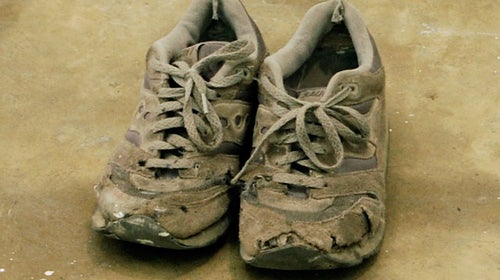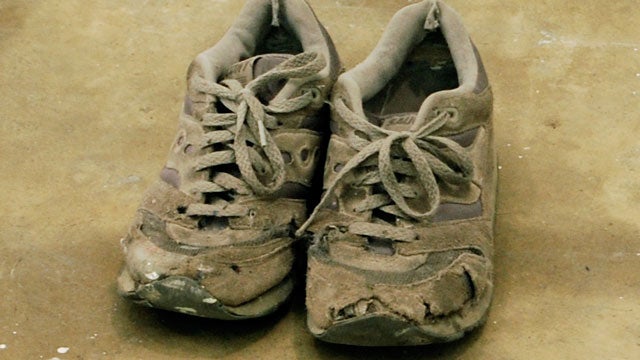Your running shoes aren’t all that different than your car. Take proper care of them, and they’ll run almost forever. However, forgo basic maintenance and you’re cutting down their life expectancy. We’ve compiled a list of basic tips to help you squeeze every last mile out of your shoes—up to 500 miles, if you’re lucky.
How Much Do You Pay?
An average pair of running shoes cost about 0-0. If you’re not taking care of your shoes, you’re MPD (miles per dollar) suffers. Slide the bar below to figure out how much you spend per mile depending on when you retire your running shoes.These shoes were not made for walking:
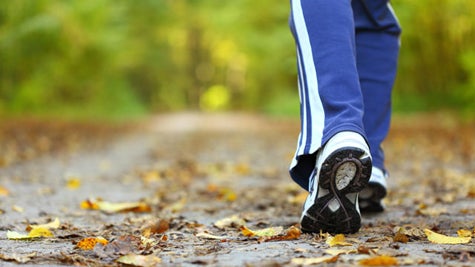
Woman walking cross country and trail in autumn forest. Shutterstock/
Do This: Run in your running shoes.
The miles you accumulate meandering through the grocery store, jumping into a pick-up game of basketball, and talking the dog out at night would surprise you. Americans, on average, walk 2.5 miles per day, . Over the course of a week that's 17.5 miles of junk that could be better spent on dirt and woodchips.
If you like wearing your running shoes because loafers hurt your feet, then pick the right tool for the job: walking shoes. Many brands that make running shoes also design shoes for the impact forces and the body mechanics of walking, including , and
Save your soles:
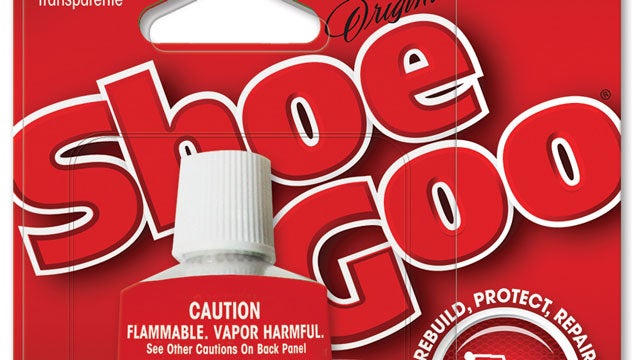
Shoe Goo footwear adhesive. Photo: Epigraphics/Wikimedia
Do This: Resole your shoes with footwear adhesives.
Too many runners wear a small section of the rubber soles down to the white foam beneath and chuck a shoe that’s still a teenager. This is like buying a new car when its tires go bald. If you’re prone to wearing down the rubber sole before you’ve squashed the life you're of the midsole cushioning, just patch the hole. Footwear adhesives, such as , can allow you to effectively resole a section of your shoe without having to visit a cobler. Apply the glue to the worn spot, let it sit a day or two to cure, and you’re ready to get back on the road. You can read detailed instructions on Shoe Goo’s website
Drying your soggy shoes:
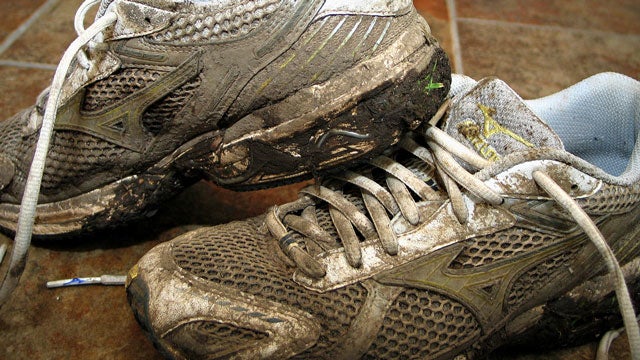
Muddy running shoes. Photo: Phill and Pam
Do This: Air dry your shoes.
While it might be tempting to throw soggy shoes into the dryer, resist. April shower bring damp, wet shoes, but putting them in the dryer or on a radiator cooks them. The high temperatures can melt the glue holding the tread and the midsole together and crack the shoe.
Instead: Remove the sock liner, unlace your shoes, put them in front of a fan, and let them air dry. You can also stuff paper towels or newspapers into the shoe to help absorb the moisture. It may take about a day to completely dry out, but it’ll add miles to your shoe’s lifespan.
Shoe hygiene:
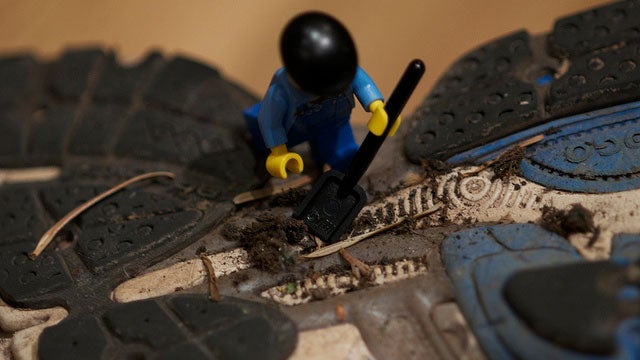
Lego men cleaning a pair of running shoes. Photo: Nico Busch
Do This: Wash your shoes in the dishwasher.
When dirt, mud, salt, and grime build up on the outside of your shoes, it can stiffen the upper and cause additional hot spots on your feet for blisters to form. But like the dryer, the washing machine can be dangerous for a pair of shoes. Laundry detergents can dissolve the glue that holds your shoes together. If you must wash your shoes, try putting them in the dishwasher without any soap. Just place them in the upper rack, but turn off the heat dry cycle. However, many shoe manufacturers, , advise washing your shoes by hand with a soft-bristle toothbrush, soap, and water.
Sweet feet: keeping running shoes smelling fresh:
Airing out your shoes is a good way to keep the stentch away. Photo: Shutterstock/
Do This: Take a baking soda bath.
If the smell of your shoes causes you to drive to the trailhead with the windows down don’t try to cover up the odor with a fresher smell. It only creates shoes that smell like a bed of flowers trampled by sweaty feet. The goal is to neutralize those odors.
Sprinkling a layer of baking soda overnight can do wonders for a ripe pair of shoes. Shake out the baking soda in the morning and you should smell a considerable difference. If your feet are extra stinky you can try putting them in the dishwasher.
How to tie your shoes:
Do this: Ian’s Knot.
In 1997, John Kagwe of Kenya had to stop to retie his shoes during the New York City Marathon. He still won, but nothing is more annoying than having to interrupt the zen of your run to tie your shoes. If you’re still tying your shoes with “bunny ear” and your laces chronically unravel on your runs, then you might be tying your shoes with a “Granny Knot” or “Slip Knot.” Instead, try Ian’s Knot, a super quick way to tie your shoes that won’t come apart when you’re running. Unlike the Granny Knot, the natural tension on the shoelaces from running tightens this knot. There’s an overwhelming amount of information on shoelace tying, lacing, and knots on, and you don’t have to be an Eagle Scout to understand it.
The myth of alternating shoes:

A pile of running shoes. Photo: Joe Hastings/Wikimedia
Do This: One pair at a time.
The common myth is that if you alternate your shoes every other day, it’ll make both of them last longer. But shoes don’t need a “rest” day like you or I. The reality is that it takes as long for your shoes to bounce back from a workout as the duration of the workout itself. If you run for thirty minutes, it’ll generally take thirty minutes for the foam in your shoe to recover and fluff back into it’s usual shape. So if you only run about once a day, don’t feel bad if your running shoes are an only child. However, high-frequency runner who double or even triple during the day can benefit from having a shoe siblings.
